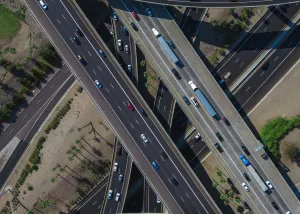Infrastructure week is finally over.
The Bipartisan Infrastructure Framework (BIF), also known as the Infrastructure Investment and Jobs Act (IIJA), passed the House of Representatives Friday night after passing in the Senate in August. It contains $1.2 trillion in funding for roads, bridges, highways, and rail, in addition to a host of other appropriations for projects like replacing lead pipes and providing broadband to underserved areas. About half of that spending is entirely new, while the other half is made up of reauthorizations for already-existing federal programs.
Unfortunately, I can’t say that I’m completely overjoyed. Why? Put simply, passing the IIJA alone makes it harder to pass President Biden’s larger social spending and climate proposal, known as Build Back Better (BBB). And that’s especially disappointing because on its own, the IIJA doesn’t do much for climate policy or strengthening America’s social safety net.
Complaints mostly aside, the IIJA contains some laudable provisions, particularly in how it repositions the government as an active investor in the country’s future. For decades, the consensus among political and economic elites in the United States has been that the government has a small role to play in the economy, and that where it does intervene it should do so only through pokes and nudges. While COVID-19 interrupted that consensus with three huge stimulus packages, the IIJA is in its own way more significant.
Economic stimulus is a short-term response to some discrete crisis, and while the shadow of COVID surely looms over it, the IIJA is an investment in the future, not the immediate crises of the present. Projects like providing broadband to underserved areas and making electric vehicles more feasible by building a host of new charging stations across the country are forward-looking proposals that demonstrate what a more bold kind of governance can accomplish.
To get a clearer sense of the IIJA’s break from the past, we can compare it to recent infrastructure bills from presidents of both parties. Bill Clinton passed a $203 billion infrastructure bill in 1998, about $327 billion in today’s dollars. George Bush passed one in 2005, a little less than $400 billion today. Barack Obama passed a few small, short-term infrastructure bills over the course of his presidency, none of them as large as the IIJA. With the caveat that how money is spent matters—as Philip wrote in his Focus yesterday—this shift in our conception of what the government can and should do for citizens is really, really important.
But as much as the IIJA invests in America’s future, such investments are missing a big target without addressing the climate crisis or establishing a more robust social safety net that prevents Americans from falling through the cracks. In other words, it’s refreshing to see government policy take a more proactive stance in facing the challenges of the future, but it’s disappointing that the IIJA is insufficient to face the very biggest challenges. Broadband could do wonders for education in rural communities, for example, but it will fall short if kids aren’t well-nourished. A more efficient energy grid, which the IIJA promises, can’t reach its potential if we don’t transition away from fossil fuels.
In short, the IIJA needs Build Back Better to be transformative in the best way. The myriad policies that operate in a liberal democracy need to complement each other if good governance is to be achieved. Without BBB, the IIJA is a fine but not great piece of legislation, likely to be remembered more for its high price tag than its admirable new programs. Alone, the IIJA doesn’t provide a safety net for American workers or come anywhere close to the scope of action needed to curb carbon emissions. But if we do get both, that new paradigm—constituted by a strong social safety net, growth-oriented climate measures, and a fair but competitive market economy—looks possible.
Subscribe to Spectacles

Comments
Join the conversation